人道人工智能的螺旋式下滑仍在继续
-
目录
“Unraveling the Threads: The Steep Decline of Humane AI Ethics”
介绍
The Downward Spiral of the Humane AI Pin Continues explores the complex trajectory of artificial intelligence as it intertwines increasingly with human lives, ethics, and societal norms. This analysis delves into the paradoxical development of AI systems designed to embody humane principles, yet often leading to unintended consequences that exacerbate issues of privacy, autonomy, and inequality. As AI technologies advance, the promise of enhancing human capabilities and experiences is shadowed by the risk of deepening existing societal fractures, raising urgent questions about the direction and governance of AI development. This narrative critically examines how each technological breakthrough not only propels us forward but also potentially spirals downward, impacting human values and ethical frameworks.
Ethical Implications: The Downward Spiral of Humane AI Pin
人道人工智能的螺旋式下滑仍在继续
The concept of the Humane AI Pin, initially heralded as a beacon of ethical AI development, has increasingly come under scrutiny. This initiative, designed to signify adherence to ethical standards in AI systems, appears to be faltering under the weight of its ambitious goals. The decline can be attributed to several key factors that highlight the complex interplay between technological innovation and ethical governance.
Initially, the Humane AI Pin was introduced as a marker for companies and developers committed to upholding principles such as fairness, transparency, and accountability in AI. The idea was simple yet powerful: similar to certifications in other industries, the pin would help consumers identify and support products that met high ethical standards. However, the practical implementation of these principles has proven to be more challenging than anticipated.
One of the primary issues has been the vague and often subjective nature of the criteria used to award the pin. Despite the establishment of guidelines, the interpretation of what constitutes ‘ethical AI’ varies significantly among stakeholders. This ambiguity has led to inconsistencies in how the pin is awarded, undermining its credibility and value. Moreover, the lack of a standardized, rigorous assessment process has made it difficult for the initiative to maintain its integrity and purpose.
Furthermore, the rapid evolution of AI technology itself poses a significant challenge. AI systems are becoming increasingly complex, and their decision-making processes more opaque. This complexity makes it difficult to ensure that AI consistently adheres to ethical guidelines, particularly in areas like fairness and bias, which are deeply contextual and continuously evolving. As a result, the static nature of the certification process represented by the Humane AI Pin struggles to keep pace with dynamic technological advancements.
Additionally, the enforcement of compliance has been tepid. Without robust mechanisms to monitor and ensure ongoing adherence to ethical standards, the pin’s effectiveness is questionable. The voluntary nature of the certification means that it is often adopted by those who already prioritize ethical considerations, while those who might benefit most from strict oversight are less inclined to participate.
The commercial pressures surrounding AI development also play a crucial role in the pin’s declining influence. In a market driven by innovation and speed to market, ethical considerations can be viewed as hindrances rather than essential components. This perspective can lead to a preference for short-term gains over long-term sustainability and trust, further eroding the foundation of initiatives like the Humane AI Pin.
In conclusion, while the Humane AI Pin was a well-intentioned effort to promote ethical practices in AI, its effectiveness has been compromised by a range of factors. These include the ambiguity of its criteria, the complexity of modern AI systems, weak enforcement mechanisms, and the overriding commercial interests that often sideline ethical concerns. To reverse this downward spiral, a more robust, transparent, and adaptive framework is required. Such a framework should not only address the current shortcomings but also anticipate future challenges, ensuring that ethical AI development is not just an ideal but a fundamental aspect of technological progress.
Technological Challenges: Addressing the Decline of Humane AI Pin

人道人工智能的螺旋式下滑仍在继续
In recent years, the Humane AI Pin, a technology designed to ensure artificial intelligence systems adhere to ethical guidelines, has seen a significant decline in effectiveness and reliability. This downturn can be attributed to a variety of complex factors, each intertwining with the next, presenting a formidable challenge to developers and ethicists alike.
Initially, the concept of the Humane AI Pin was heralded as a groundbreaking advancement. It was intended to act as a digital “badge” that AI systems could “wear” to signify compliance with ethical standards, such as fairness, privacy, and transparency. However, the technology has struggled to keep pace with the rapid evolution of AI capabilities and the increasingly sophisticated tasks it is assigned. This discrepancy between the initial design of the Humane AI Pin and the advanced state of AI development has led to significant operational challenges.
One of the primary issues is the scalability of the Humane AI Pin. As AI systems grow more complex, the static nature of the initial Humane AI Pin protocols has proven insufficient. These protocols were not designed to evolve alongside AI systems, leading to outdated standards that no longer provide meaningful oversight. Moreover, the one-size-fits-all approach initially adopted fails to address the nuanced differences across various AI applications, from autonomous vehicles to personalized medicine, each requiring bespoke ethical considerations.
Furthermore, the enforcement mechanisms of the Humane AI Pin have been largely ineffective. Without stringent regulatory frameworks or clear penalties for non-compliance, many AI developers have found it easy to bypass these ethical guidelines. This lack of enforcement undermines the purpose of the Humane AI Pin, reducing it to a mere symbolic gesture rather than a functional safeguard.
Additionally, the technological infrastructure supporting the Humane AI Pin has faced significant hurdles. The integration of ethical guidelines into AI systems at a technical level is inherently complex. It involves not only the development of new algorithms that can interpret and apply these guidelines but also the continuous monitoring and updating of these systems to ensure ongoing compliance. The costs associated with these processes are substantial, and without adequate funding, the infrastructure cannot be maintained effectively.
Moreover, the rapid pace of AI development means that new ethical dilemmas are constantly emerging, outstripping the capacity of the Humane AI Pin to adapt. Issues such as algorithmic bias and decision-making transparency have gained prominence, requiring a dynamic and responsive approach to ethics in AI. The static nature of the Humane AI Pin is ill-equipped to handle these evolving challenges, leading to a gap between ethical standards and practical implementation.
In conclusion, the decline of the Humane AI Pin is a multifaceted issue that reflects broader challenges in the integration of ethics into AI development. To address this decline, a more flexible, scalable, and enforceable approach is required. This might involve the development of adaptive ethical frameworks that can evolve in tandem with AI technologies, enhanced regulatory measures to ensure compliance, and increased investment in the technological infrastructure necessary to implement these ethical guidelines effectively. Only through such comprehensive measures can the promise of humane AI be truly realized, ensuring that these technologies contribute positively to society while adhering to the highest ethical standards.
Societal Impact: Consequences of the Failing Humane AI Pin Initiative
人道人工智能的螺旋式下滑仍在继续
The Humane AI Pin initiative, once heralded as a beacon of ethical artificial intelligence development, continues its troubling descent into ineffectiveness. Launched with the aim of promoting transparency, fairness, and accountability in AI systems, the initiative sought to establish a standard of ethics that would guide developers and corporations in the creation of AI technologies. However, recent developments indicate a significant deviation from these lofty goals, leading to a series of unintended consequences that have rippled across society.
Initially, the Humane AI Pin was conceived as a voluntary accreditation system, where AI developers could earn a “pin” or certification by adhering to certain ethical guidelines. This certification was intended to reassure users and regulators of the AI system’s commitment to ethical practices. However, the voluntary nature of this certification has led to its first major pitfall: low adoption rates. Many AI developers, especially those in highly competitive sectors, have bypassed this certification, viewing it as an unnecessary hurdle that could potentially slow down innovation and market entry.
Moreover, the criteria for earning the Humane AI Pin were criticized for being overly vague and subject to interpretation. This ambiguity has allowed some entities to claim adherence without making substantial changes to their AI systems, undermining the credibility of the initiative. As a result, the pin has failed to become a reliable indicator of ethical AI, which in turn has eroded public trust in the certification and the AI systems it endorses.
The erosion of trust has been further exacerbated by high-profile failures of certified AI systems. Several incidents where AI technologies made unethical decisions despite having the Humane AI Pin have been widely publicized, casting doubt on the effectiveness of the initiative’s oversight and the robustness of its ethical guidelines. These incidents have not only damaged the reputation of the involved companies but have also sparked broader societal debates about the role and regulation of AI in critical decision-making processes.
The societal impact of these failures is profound. In sectors such as healthcare and criminal justice, where AI decisions can have life-altering consequences, the lack of reliable ethical standards raises significant concerns. The public’s dwindling confidence in AI technologies threatens to stall the adoption of potentially beneficial innovations, setting back advancements in these critical fields.
Furthermore, the initiative’s struggles have prompted regulatory bodies to consider more stringent measures. Governments and international organizations are now exploring the possibility of mandatory ethical standards for AI, which could impose new compliance challenges for developers. While such regulations might strengthen the ethical foundation of AI technologies, they could also stifle innovation by imposing rigid requirements that may not be adaptable to every AI application or technological advancement.
In conclusion, the Humane AI Pin initiative’s downward spiral serves as a cautionary tale about the challenges of implementing ethical standards in rapidly evolving technological landscapes. Without significant reforms, including clearer guidelines, stricter oversight, and perhaps a shift from voluntary to mandatory participation, the initiative risks becoming irrelevant. Addressing these issues is crucial not only for restoring public trust but also for ensuring that AI development aligns with societal values and ethical principles, thereby securing the beneficial potential of AI technologies for future generations.
结论
The conclusion about “The Downward Spiral of the Humane AI Pin Continues” suggests that the development and implementation of AI technologies are increasingly diverging from ethical and humane principles. This trend raises significant concerns about the impact of AI on society, including issues of privacy, autonomy, and social inequality. It underscores the urgent need for more robust ethical frameworks and regulatory measures to ensure that AI development aligns with human values and contributes positively to society.
